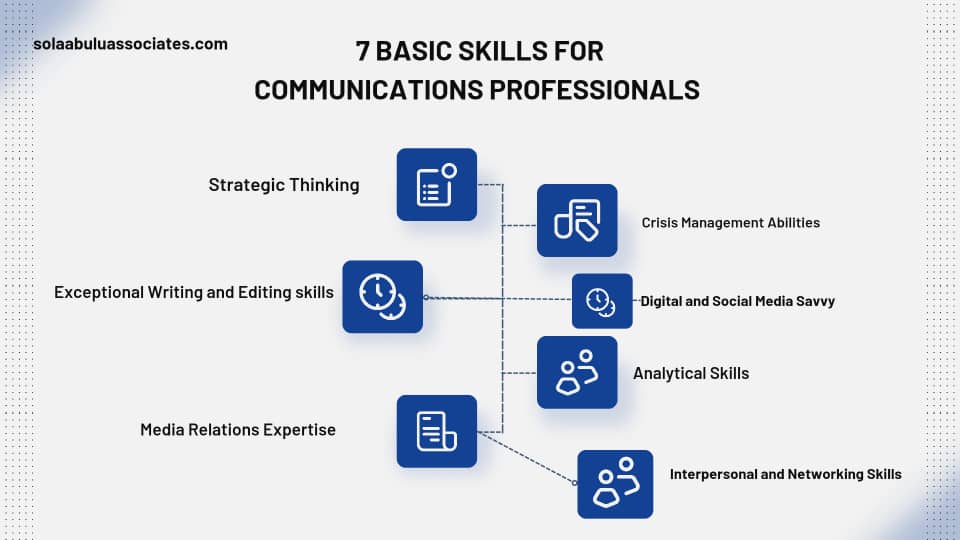How to manage your communications team

Everything a business and organization does is geared towards trying to influence people. For instance, businesses that seek customers also need to build trust, create a space for themselves in their industry and grow the business. Communication is at the heart of these activities because the ability to communicate effectively to an identifiable target audience can aid in strengthening trust, establishing a brand presence and growing the business’s reputation. This is why business leaders must pay keen attention to creating vacancies for a skilled communications team, alongside having the required knowledge to manage the team.
It is important to state that communications in the corporate world expand beyond a brand’s online presence. It also involves an ability to share the brand’s vision and story with external and internal stakeholders. The communications team is saddled with a responsibility to provide information on the business operations to customers, the market and the general public. Many organizations often make the mistake of focusing on external communications leaving out an important aspect of communicating internally. Within the organization, leadership needs to be quite effective and employees need to understand the brand and be equipped to uphold its reputation.

The reporting line of an organization’s communications team reveals how the organization value their communication efforts and its effect on the brand’s reputation and growth. An organizational leader or chief executive officer (CEO) who is interested in how the brand is perceived often shortens the hierarchy that is common in other roles in the corporate world. The communications team should report directly to the CEO as the custodian and epitome of a brand because CEOs and founders own the brand’s story and communications professionals sell it to the world. The communications team then becomes an assistant in crafting strategies to communicate the brand’s vision, mission and commitment to its stakeholders and the general public.
A communications team is at the risk of being ineffective when not properly managed by an executive who has the touchpoint of the brand. In this instance, the brand can be portrayed in a way that does not suit the intended narrative. Therefore, for the story to be concise and reflect the attributes of the board, the custodian of the brand must work with the communications team to ensure that they deliver accurately on the agenda.
Brand and reputation management matters are C-suite priorities. Aside from the fact that other team members barely have communication competencies, they are also not the face or touchpoint of the brand in the face of crisis. This makes the C-suite leaders who are aware of the brand’s roadmap at every time better positioned to closely monitor the brand’s presentation both online and offline. Watch Sola Abulu’s short video on “8 Reasons why the communications team should report to the CEO”
One of the most important strategy that a CEO has to handle is brand and reputation because once an organization or business loses its reputation, the business begins to derail. A typical example can be seen when Toyota recalled. In Nigeria for example, Toyota was regarded as one of the leaders in the automobile industry until the recall crisis led to many other brands surfacing and gaining more prominence. This explains the importance of a brand’s reputation and strategy to its growth.
A communications team can be stifled when their advisories are not regarded as a priority. The team can be seen as internal consultants of an organization and when regarded this way, they become more effective in shaping the desired narrative of the organization. A typical example is when the communications budget is overlooked for months and some key deliverables are not carried out as a result, the team is not given the flexibility it requires to become the centre of excellence for the brand and cannot support the overall business. It is easy to stifle a communications team when they are made to work under other departments like the human resource department who are already overwhelmed with their unique responsibilities and less concerned with brand reputation. This further strengthens the need for reporting to business leaders.
To conclude, the communications team must have clear lines of communication with top leadership to ensure that its efforts support and enhance the organization’s strategic objectives. This alignment helps in maintaining a unified voice and consistent messaging across all platforms and audiences. By placing the communications team within the appropriate reporting structure, not only will the organization’s messaging be both strategic and impactful but the organization can effectively build and manage a communications team.
You will find this resource on Operational Excellence: The Role of Communications useful.

Sola Abulu & Associates (SA&A) has annouced that the 1st cohort of its internationally accredited Public Relations, Media & Stakeholder Management Course is scheduled to hold online via ZOOM from 9AM – 4Pm on Thursday, May 30, 2024.
Registration for the course is ongoing and closes at 11:59PM on May 28, 2024.
Watch the course teaser video here and sign up here.
………………………………………………………………………………………………
Sola Abulu & Associates is a strategy and communications consulting and training firm committed to enabling businesses, brands and organizations to achieve their objectives through strategic communications, organizational effectiveness and reputation risk management
